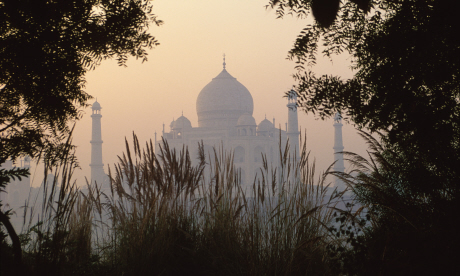
Use the compositional device of framing to give your photos extra punch, no expensive kit required, advises Steve Davey
One way to make your images stand out from the crowd is to use the compositional device of framing. This involves taking the picture so that some outside element – be it a window or a flourish of foliage – acts as a frame around the main focus. As well as balancing a picture, it concentrates interest on the subject and can convey a more powerful meaning.Potential frames are everywhere, from the obvious windows and doorways, to using an overhanging branch, shooting though a person’s legs or utilising the interplay of light and shadow.
When employing framing, focus can be an issue: as soon as you introduce more than one element into a picture, you have to ensure the camera focuses on the correct one.
To do this, wrestle control back from your camera – choose the active focus point in the viewfinder yourself and place it over the element that you want to be in focus.
Sorting exposure can be more tricky. If there is a large area of shady frame, this can fool your camera into overexposing the rest of the picture. Counter this by using a spot meter (if your camera has one) or manually working out the exposure for the lit areas of the image.
Often the contrast between light and shadow areas will be too great to balance in a single frame. You could use a fill-in flash to light the inside of a building so that it matches the brightness of the outside, or take two different exposures and combine them in Photoshop.
However, it’s easiest to use composition to mitigate the problem: simply decide upon what the most important element is, expose for that and then compose so the image isn’t dominated by the corresponding area of light or shadow.
Photographing the Taj Mahal at dawn (above), I was struck by the reeds and trees opposite and shot with them framing the Taj to create a picture with a more interesting foreground. I accentuated the suggestion of the frame by shooting from a distance with a telephoto lens to make the reeds and the Taj appear closer together. Shooting a frame with a wide angle lens will make the thing through the frame looker smaller and further away.
1. Maximum depth of field
Sometimes you will want both the background and the frame in focus, as there is a necessary detail in each. Careful choosing of the focus point and using a small aperture such as f11 will help keep both sharp.
2. Frame a crowd
Crowds cause composition problems, as the picture’s edge usually ends up cutting someone in half. Use something (a balcony, for example) to frame the picture, so it cuts any people, not me. You can also use pillars or windows in this way.
3. Frames are everywhere
It’s easy to find a frame with a little imagination – and by altering your viewpoint. Frames are not just visual devices, they can also be used to create relationships between the subjects in your picture.
1. If you only remember one thing...
Framing devices, whether real or virtual, can be found in many guises. Keep your eyes open: maybe look behind as you prepare to take a picture, or try crouching down to shoot from a different viewpoint.
2. Tech tip...
You probably won’t be able to get both subject and frame in focus due to the depth of field. Decide which is the most important to have sharp, and then move the focus point to focus on the correct area.
3. One for the kitbag...
The great thing about focusing on your composition and framing is that you don’t need any extra equipment – just your own creativity and imagination!